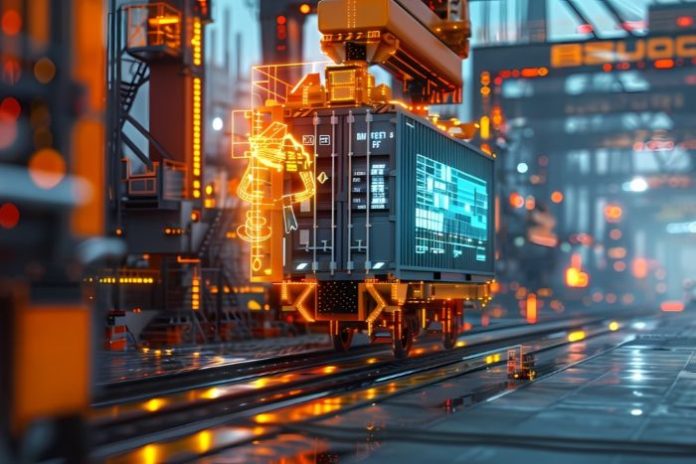Walk into any Australian manufacturing plant today and you’ll notice something different. The hum of machinery sounds the same, but there’s a new sense of precision and coordination. It’s all thanks to the rise of the smart factory.
Key Takeaways
- Smart factories in Australia utilize sensors and automation systems to improve efficiency and reduce waste.
- Technologies like SCADA, VSDs, and IoT link production processes, enhancing control and sustainability.
- Predictive maintenance and real-time data analysis decrease downtime and increase product quality.
- Smart factories alter job roles, shifting workers toward technician and analyst positions, supported by new educational programs.
- The future of Australian manufacturing focuses on smart, sustainable practices, combining technology with human innovation.
Table of contents
What Makes a “Smart” Factory Anyway?
Here’s the thing about smart factories. They’re not just regular factories with a few tablets bolted to the walls. We’re talking about a complete rethink of how things get made.
Picture this: sensors everywhere, collecting data on everything from temperature to vibration levels. Machines that can predict when they’re about to break down. Production lines that adjust themselves based on demand. It sounds like science fiction, but it’s happening right here in Australia.
The backbone of all this? Industrial automation systems that can talk to each other. When one machine finishes its part of the job, it automatically tells the next machine in line to get ready. No human intervention is needed.
The Tech That’s Making It Happen
Australian manufacturers are embracing some seriously cool technology. SCADA systems (that’s Supervisory Control and Data Acquisition, if you’re curious) are becoming the nervous system of modern factories. These systems monitor everything and give operators real-time control over entire production processes.
But here’s where it gets interesting. Companies like Venus Automation are helping manufacturers integrate programmable logic controllers (PLCs) with advanced monitoring systems. The result? Factories that can pretty much run themselves while keeping humans in the loop for the important decisions.
Variable speed drives (VSDs) are another game-changer. These clever devices control motor speeds based on actual demand rather than running everything at full throttle all the time. The energy savings alone make most plant managers very happy — and at a time when electricity costs can make or break a business, every saved kilowatt-hour counts.
Then there’s industrial IoT (the Internet of Things), which links every part of the production process into one cohesive system. When every component “talks” to every other, you get instant feedback, better data, and more precise control. The result? Better products made faster and cheaper.
Real Benefits, Not Just Fancy Tech
Look, shiny new technology is great, but what are Australian manufacturers getting out of all this?
First up: efficiency that would make your accountant weep tears of joy. Smart factories can reduce waste by up to 30% because they know exactly how much material they need and when they need it. No more “just in case” ordering that ties up cash flow.
Then there’s predictive maintenance. Instead of waiting for machines to break down (usually at the worst possible moment), smart sensors can predict failures weeks in advance. Maintenance teams can plan repairs during scheduled downtime rather than scrambling at 2 AM on a Sunday.
Quality control has gotten impressive too. Computer vision systems can spot defects that human eyes might miss, especially after an 8-hour shift. The rejection rate drops, customer satisfaction goes up, and everyone wins.
And don’t forget sustainability. Smarter production lines mean less waste, lower energy use, and fewer emissions — a big win in an era when ESG (environmental, social, and governance) reporting is becoming a business necessity. Many companies are now marketing their “green” manufacturing processes as a competitive advantage.
The Human Element Still Matters
Here’s something that surprises people: smart factories haven’t eliminated jobs. They’ve changed them. Workers are becoming more like technicians and analysts rather than just machine operators.
The skills required are different, sure. Understanding data dashboards and troubleshooting automated systems takes training. But Australian manufacturers are investing in their people, and the results show.
Many TAFEs and universities are now offering courses in mechatronics, industrial data analytics, and robotics maintenance — fields that didn’t even exist in most curriculums a decade ago. As older workers retire, a new generation of “digital tradies” is stepping up, bringing a mix of traditional hands-on skills and tech know-how.
What’s Coming Next?
Artificial intelligence is starting to creep into Australian manufacturing in some fascinating ways. Machine learning algorithms can optimize production schedules better than even experienced planners. They consider variables that humans might miss — like minor supply chain delays or subtle machine wear — and adapt to changing conditions in real time.
Edge computing is another trend worth watching. Instead of sending all data to the cloud for processing, smart devices are getting powerful enough to make decisions locally. This reduces delays and keeps production running even if internet connections hiccup.
We’re also seeing growth in digital twin technology — virtual replicas of entire factories. Engineers can test changes, run “what-if” scenarios, and predict how a new process will affect efficiency before making a single adjustment in the real world. It’s like having a crystal ball for production planning.
And then there’s collaborative robotics (or “cobots”), which are designed to work safely alongside humans. These machines don’t replace workers; they enhance them — taking over repetitive or heavy tasks while humans handle complex, high-value work.
The Bottom Line
Australian manufacturing is in the middle of something pretty special. Smart factory technology isn’t just about keeping up with global competition anymore. It’s about creating sustainable, efficient production that can adapt to whatever comes next.
The factories leading this charge aren’t necessarily the biggest ones. They’re the ones willing to embrace change and invest in technology that makes sense for their specific needs. And honestly? That’s very Australian.
Additional Insights: Why It Matters for Australia’s Future
Here’s the bigger picture. Australia’s manufacturing sector contributes around 6% of national GDP, employing nearly 900,000 people — and it’s evolving from traditional, high-volume production toward high-tech, high-value manufacturing.
Smart factories are at the heart of that transformation. They’re helping companies compete globally without needing to move operations offshore. And with Australia’s focus on sovereign capability — especially in sectors like defense, food production, and medical manufacturing — this shift toward intelligent automation is both an economic and strategic advantage.
There’s also a cultural shift happening. The old image of manufacturing as dirty, noisy, and physically exhausting is being replaced by one of clean, data-driven workplaces filled with smart systems and skilled technicians. That change is already attracting younger workers who might once have looked only to tech startups or finance.
If there’s one takeaway, it’s this: the future of Australian manufacturing is smart, sustainable, and surprisingly human. Machines might be learning fast, but the people guiding them are the real innovators.











